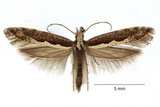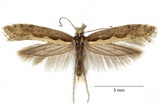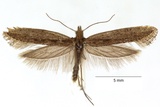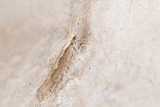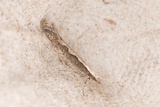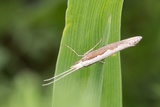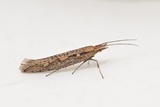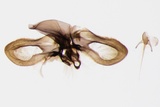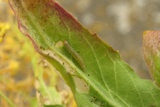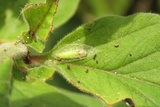Plutella xylostella (Linnaeus, 1758) Species
Last modified: June 20, 2025, 5:45 p.m.
A common and resident species throughout Belgium but the established populations are regularly supplemented with migrating specimens.
Details
- Classification
- Family: Plutellidae > Genus: Plutella > Species: Plutella xylostella
- Vernacular names
- Koolmot (NL), Diamond-back Moth (EN), Teigne des choux (FR), Kohlschabe (DE)
- Synonyms
- Plutella maculipennis (Curtis, 1832) and Plutella cruciferarum Zeller, 1843
- First mention in Belgium
- De Sélys-Longchamps E. 1844. Énumération des insectes Lépidoptères de la Belgique. — Mémoires de la Société royale des Sciences de Liége 2: 1–35. On page 24 (as Hypsolopha xylostella L.). view page
- Status
-
Migrant
Distribution
Bionomics
The larvae live in a loose web on the underside of the leaves of Brassica or other species of Cruciferae. Pupation takes place in an open, net-like cocoon on the foodplant or amongst detritus on the ground. The pupa hibernates and the imagines come to light.
Flight periods
The adults have been observed in Belgium from early January till late December with a peak during June. There are two or three generations per year that can hardly be distinguished from each other.
Observed on
- Host plant (species):
- Cardaria draba
- Host plant (genera):
- Brassica
This species occurs on many species of Brassicaceae.
Habitat
It inhabits open grasslands and heathlands as well as cultivated fields.
